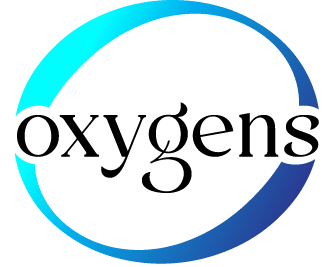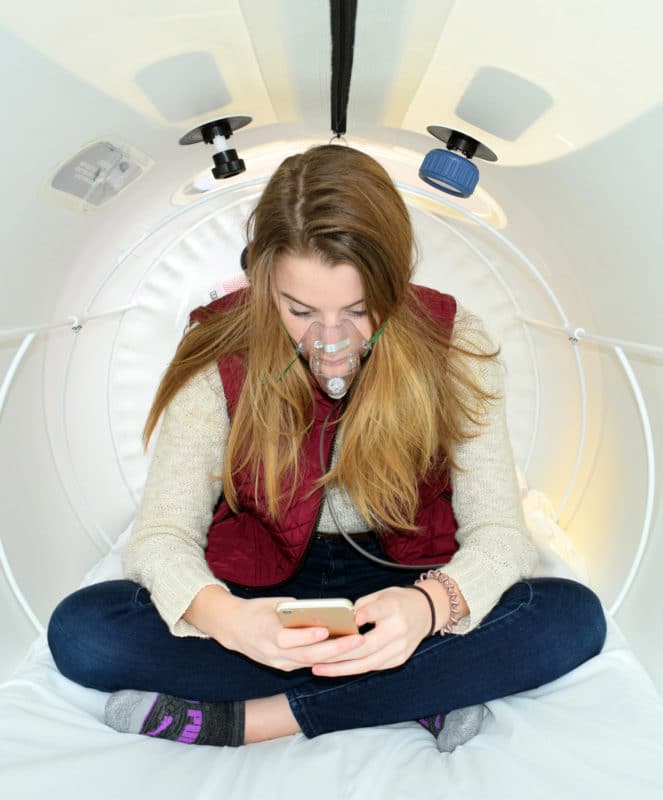What the science actually says about pressure vs. oxygen
Short answer: Both pressure and oxygen matter in hyperbaric therapy. But there’s growing interest that mild pressure alone (around 1.2–1.5 ATA) could produce measurable effects – even when breathing room air (no extra oxygen supply) – and that some people may improve under those conditions. Results vary by individual as well as condition, and this is not a substitute for medical care. FrontiersHealth Systems Research
Oxygens equipment is designed for general wellbeing and relaxation purposes only. While studies on pressurised oxygen environments exist, results vary, and our systems are not medical devices. They are not intended to diagnose, treat, cure, or prevent any illness or medical condition.
If you have specific health concerns, it’s always best to speak with a healthcare professional. We encourage responsible use and awareness that wellness technologies may affect individuals differently.
Why oxygen % isn’t the whole story
Hyperbaric therapy has two bioactive ingredients:
-
Increased pressure, and
-
Increased oxygen (hyperoxia).
So, when we talk about “oxygen therapy,” we really mean a combination of oxygen and pressure working together. Understanding how these two factors interact helps explain why the oxygen percentage you breathe isn’t the whole story.
Understanding Partial Pressure
When it comes to hyperbaric oxygen therapy (HBOT), it’s not just about how much oxygen you breathe – it’s about how much oxygen your body can actually absorb.
The key factor is something called oxygen partial pressure (ppO₂) – the amount of oxygen that dissolves into your bloodstream. This is what really drives the body’s healing and recovery response. It’s a principle known as Henry’s Law, which explains that the higher the pressure, the more oxygen the body can take in.
At normal atmospheric pressure (1.0 ATA), the air we breathe contains about 21% oxygen. Inside a mild hyperbaric chamber pressurised to around 1.5 ATA, that pressure alone (without additional oxygen supply) increases the amount of oxygen your body can absorb by roughly 50% – similar to breathing air that’s about 31–32% oxygen at sea level.
When oxygen is also supplied through a concentrator (producing up to 95% purity) and delivered by mask, the mix you actually breathe is typically 50–70% oxygen – depending on mask fit and airflow. Under the mild pressure of 1.3-5 ATA, this delivers as much or even more oxygen to the body than breathing 100% oxygen at normal pressure.
In simpler terms, even though you’re not breathing pure oxygen, the combination of increased pressure and oxygen enrichment helps your body absorb far more oxygen than usual. This is what supports better circulation, recovery, and overall wellness.
Some studies have shown measurable benefits from mild HBOT even when people breathe lower oxygen concentrations:
-
Rossignol (2007, Medical Hypotheses 68(6):1208–1227) – Improvements were seen at 1.3 ATA with just 24–30% oxygen.
-
Thom (2009, Journal of Applied Physiology 106(3):988–995) – Showed that biological effects depend on oxygen pressure, not just oxygen percentage.
-
Harch et al. (2015, Medical Gas Research 5(1):9) – Reported positive results using mild pressure chambers with oxygen concentrators and masks.
- Peer-reviewed studies (2022) show that therapeutic pressure – not oxygen concentration alone – is the main driver of HBOT’s effects: https://www.frontiersin.org/journals/neurology/articles/10.3389/fneur.2022.815056/full?
So even when you’re breathing a mix of oxygen and chamber air, your body is still getting a powerful oxygen boost.
The Maths: Oxygen Partial Pressure at 1.5 ATA
| Breathing Condition | Oxygen Fraction (FiO₂) | Pressure (ATA) | Resulting ppO₂ (ATA) | Equivalent “sea-level oxygen” |
|---|---|---|---|---|
| Room air at sea level | 0.21 | 1.0 | 0.21 | 21 % O₂ |
| 100 % oxygen at sea level | 1.00 | 1.0 | 1.00 | 100 % O₂ |
| 50 % oxygen at 1.5 ATA | 0.50 | 1.5 | 0.75 | ≈ 75 % O₂ at sea level |
| 60 % oxygen at 1.5 ATA | 0.60 | 1.5 | 0.90 | ≈ 90 % O₂ at sea level |
| 70 % oxygen at 1.5 ATA | 0.70 | 1.5 | 1.05 | ≈ 105 % O₂ at sea level |
| 95 % oxygen at 1.5 ATA | 0.95 | 1.5 | 1.43 | ≈ 143 % O₂ at sea level |
What These Numbers Show
Even though a user may only inhale 50–70 % oxygen, the added pressure of 1.5 ATA multiplies the oxygen dose:
-
50 % O₂ → ppO₂ = 0.75 ATA
-
70 % O₂ → ppO₂ = 1.05 ATA
That means breathing 70 % oxygen at 1.5 ATA actually delivers more oxygen to the body than breathing 100 % oxygen at sea level (1.0 ATA = 1.00 ppO₂).
In Simple Terms
At 1.5 ATA, your body absorbs roughly 1½ times more oxygen than it can at normal pressure – even if you’re not breathing pure oxygen.
The mild pressure amplifies oxygen uptake, which is why users experience tangible benefits from chambers operating at 1.3–1.5 ATA, even with moderate oxygen enrichment.
What clinical trials show (in plain English)
-
Military RCTs in persistent post-concussion symptoms:
A large JAMA trial compared 1.5 ATA with 100% oxygen to 1.2 ATA with room air and to no chamber. Both chamber groups improved, while the no-chamber group improved less – suggesting that pressurised room air is not inert. Other DoD/VA studies show a similar pattern: improvements in both oxygen and room-air pressurised groups, with mixed differences between them. JAMA NetworkUnbound MedicineHealth Systems Research -
Dose analysis across studies (2024):
A recent Frontiers in Neurology dose review documented within-group improvements at 1.3 ATA with room air in some cohorts (and also at higher pressures with oxygen). The authors argue that calling 1.2–1.3 ATA “sham” can be misleading because pressure itself has biological effects. Frontiers -
Healthy volunteer/athlete data (small studies):
In a small 2011 study of healthy adults at 1.3 ATA breathing room air, markers of oxidative stress decreased and fatigue scores improved after a single session (preliminary data; small sample). Hyperbaric Fitness, LLC
Bottom line from the trials:
It is possible that people could improve under pressurised room air (1.2–1.3 ATA) and under higher-oxygen protocols. Differences between groups are sometimes small or inconsistent, and high-quality evidence varies by condition. Major summaries (e.g., VA reviews) still call for more definitive research. Health Systems Research
So… does adding oxygen “work better”?
It depends on the goal and condition. Higher oxygen fractions at higher pressures can drive more dissolved oxygen into plasma (that’s classic medical HBOT), which is vital for some approved medical indications. But for wellbeing uses and certain symptom clusters, mild pressure with room air may show meaningful changes compared with no chamber in several studies, even if not always superior to higher-oxygen protocols. JAMA NetworkHealth Systems ResearchFrontiers
Why pressure might help, even without extra oxygen
Scientists propose a few overlapping mechanisms:
-
Slightly higher oxygen partial pressure (even on room air) can raise tissue O₂.
-
Pressure-mediated effects (mechanical/physiologic) may influence circulation, gas exchange, and cellular signaling—separate from oxygen %. (The 2024 review highlights pressure and oxygen as independent dose components.) Frontiers
-
Structured rest and ritual of sessions may contribute non-specific benefits (a point raised in commentary around the JAMA trials). Scite
Practical takeaways for mHBOT users
-
If your aim is general wellbeing (rest, recovery, relaxation), mild pressure (≈1.3 ATA) on room air may still be beneficial for some people – even without an added oxygen supply. Evidence exists, but it’s mixed and not disease-specific. JAMA NetworkHealth Systems ResearchFrontiers
-
If you’re targeting a specific condition, dosing (both pressure and oxygen %) is more critical, and current guidelines remain conservative about which conditions should use medical-grade HBOT. Harvard Health
Important safety & policy notes (read me)
-
Oxygens equipment is designed for general wellbeing and relaxation purposes only. While studies on pressurised oxygen environments exist, results vary, and our systems are not medical devices. They are not intended to diagnose, treat, cure, or prevent any illness or medical condition.
If you have specific health concerns, it’s always best to speak with a healthcare professional. We encourage responsible use and awareness that wellness technologies may affect individuals differently.
References (selected)
The studies referenced are provided for context and should not be interpreted as evidence that our products prevent, treat, or cure any medical condition.
-
Miller et al. JAMA Intern Med (2015): 1.5 ATA oxygen vs 1.2 ATA room air vs no-chamber; both chamber groups improved. JAMA Network+1ScienceDaily
-
VA Evidence Brief on HBOT for mTBI/PTSD: mixed results; room-air pressurised groups often improved; more research needed. Health Systems Research
-
Andrews & Harch. Frontiers in Neurology (2024): Dose analysis showing improvements at 1.3 ATA room air in some cohorts; pressure and oxygen both bioactive. Frontiers
-
Kim et al. Health (2011): 1.3 ATA room air in healthy volunteers reduced oxidative stress and fatigue (pilot data). Hyperbaric Fitness, LLC

